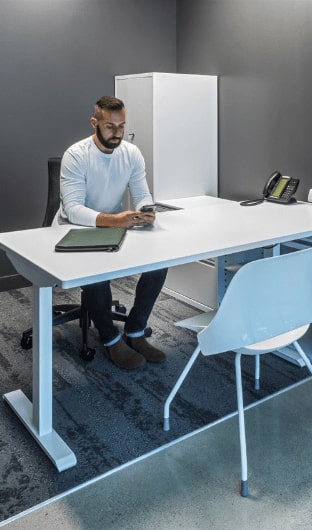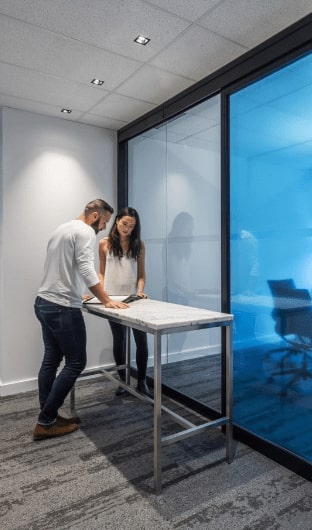
Why Flexible Furniture Is Essential For Modern Classrooms?
In today’s rapidly evolving educational landscape, modern classrooms are no longer just static environments where teachers lecture and students passively absorb information. Instead, they have transformed into dynamic, interactive spaces that foster collaboration, creativity, and critical thinking. Central to this transformation is the incorporation of flexible furniture. Gone are the days of rigid desks and immovable chairs; now the focus is on adaptability and functionality. Flexible furniture not only accommodates diverse learning styles and activities but also supports the physical and emotional well-being of students. This article will delve into why flexible furniture is essential for modern classrooms, exploring its myriad benefits and how it can create a more engaging and effective learning environment.
Essential Types Of Flexible Furniture
Adjustable Desks
Adjustable desks are versatile furniture pieces that can be easily customized for various users’ heights and preferences. These desks provide a flexible solution for accommodating different learning styles and needs in educational settings.
Mobile Seating
Mobile seating options, such as cushions and wobble stools, offer students the freedom to move around the classroom while maintaining focus. These portable seating choices promote active learning by allowing students to comfortably shift positions throughout the day.
Collaborative Furniture
Collaborative furniture pieces, like stability cushions and book bins, are specifically designed to encourage group work and interaction among students. Stability cushions provide a dynamic seating option, promoting core engagement and posture improvement. On the other hand, book bins and storage crates facilitate easy access to learning materials, fostering a collaborative environment in classrooms.
Benefits Of Flexible Furniture In Classrooms
Enhanced Engagement
Flexible classroom furniture enhances student engagement by creating adaptable learning environments. Students can easily collaborate in groups or work individually based on the task at hand. The ability to rearrange furniture promotes a dynamic setting that keeps students actively involved in the learning process.
Diverse Learning Styles
Supporting diverse learning styles is crucial in educational settings. Flexible classroom furniture ideas cater to different preferences and needs, offering various seating and workspace options. Students can choose the setup that best suits their learning style, whether it’s sitting at a traditional desk, using standing desks, or opting for alternative seating like bean bags or floor cushions.
Improved Classroom Management
Classroom management becomes more efficient with flexible furniture as it allows quick reconfiguration for different activities. Teachers can easily transition between lectures, group work, and individual tasks by rearranging the furniture layout. This adaptability fosters a smooth flow of activities and minimizes disruptions, leading to a more organized and productive learning environment.
Different Seating Configurations
Circular Seating
Circular seating arrangements in classrooms promote discussion and teamwork. They encourage interaction among students, fostering a sense of community and collaboration. With everyone facing each other, students feel more engaged and connected, leading to increased participation during class activities.
U-Shaped Setups
For presentations and teacher interaction, U-shaped setups offer significant advantages. They provide a clear view for all students, enhancing visibility and engagement. The open end of the U-shape allows the teacher to move around freely, facilitating better monitoring of student progress and enabling seamless transitions between different teaching modes.
Traditional vs. Modern Layouts
When comparing traditional with modern layouts, the impact on student focus and collaboration becomes evident. Traditional rows of desks may promote individual work but inhibit communication and collaboration. In contrast, modern layouts with flexible seating options such as bean bags or standing desks encourage group work, peer learning, and creative thinking.
Classroom Learning Environments
Flexible Arrangements
Classroom learning environments benefit from flexible arrangements that allow for various configurations to suit different teaching styles and activities. Teachers can easily rearrange furniture to facilitate group work, individual tasks, or whole-class instruction. This adaptability fosters a dynamic learning atmosphere.
Creating flexible arrangements involves incorporating movable desks, chairs, and storage units. Mobile furniture pieces enable quick transitions between setups, promoting seamless transitions between different learning activities. Adjustable tables and seating options cater to students’ diverse needs and preferences.
Ergonomic Designs
Ergonomic designs play a crucial role in ensuring students’ comfort and well-being during long hours of learning. Adjustable chairs and desks accommodate students of varying heights, promoting a healthy sitting position. Furniture with proper ergonomics supports good posture, reduces the risk of musculoskeletal issues, and enhances concentration levels.
Technology Integration
Integrating technology into classroom furniture enhances interactive learning experiences. Charging stations, built-in power outlets, and cable management solutions streamline the use of electronic devices. Collaborative furniture designs with integrated screens or interactive whiteboards promote digital literacy and active participation.
Tips For Implementing Flexible Furniture
Assess Space
Assess classroom space to determine the best placement and arrangement for implementing flexible seating. Consider the layout that promotes collaboration and engagement among students.
Involve students in the selection process of furniture. By incorporating their preferences, you ensure that the furniture meets their needs and enhances their comfort during learning activities.
Educator Training
Train teachers on effective strategies for utilizing flexible furniture. Educators should understand how to leverage the furniture to create dynamic learning environments that cater to diverse learning styles.
Engage teachers in workshops or professional development sessions focused on maximizing the benefits of flexible furniture.
Embracing flexible furniture not only enhances student engagement and collaboration but also fosters creativity and well-being. By prioritizing ergonomic design and versatile arrangements, educators can optimize learning spaces to cater to diverse teaching methods and student needs effectively.
To enhance the learning experience further, educators are encouraged to explore innovative furniture solutions continually. By staying abreast of evolving trends and research in educational furniture design, they can create dynamic environments that inspire learning and adapt to the changing demands of education. Investing in flexible furniture is investing in the future of education.
Connect with Harkel Office – a leading education furniture dealer in Ontario and choose the right flexible furniture for your education facility.





